Ukiyo-e from the end of the Edo Period to the Meiji Period
[2nd Term] February 2nd-25th
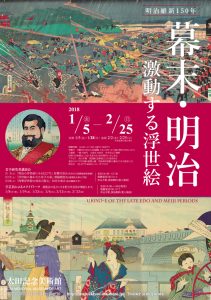
150 years ago, Japan experienced historical changes, from the downfall of the Edo shogunate to the establishment of the Meiji Government. Ukiyo-e artists who were active from the end of the Edo Period to the early Meiji Period portrayed social changes such as the Boshin War and westernization, and explored new forms of art by accepting Western styles. 2018 is the 150th year from the Meiji Restoration. In its commemoration, we introduce 150 pieces of ukiyo-e produced from the end of the Edo Period to the Meiji Period (the exhibits will be changed between the first term and the second term). Please enjoy the rapidly changing ukiyo-e, mirroring the turbulence from the end of the Edo Period into the Meiji Period.
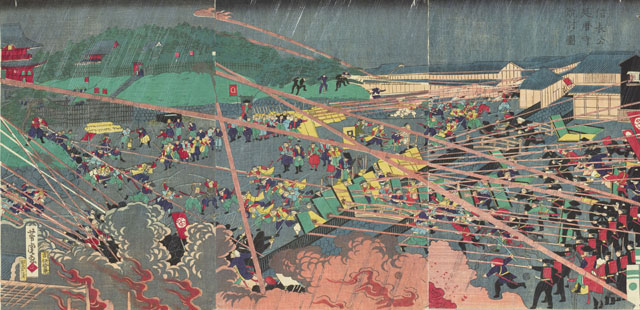
Utagawa Yoshitora “Caricature of the Ueno War : Fire Attack of the Enryaku-ji Temple” (1st term)
Highlight ① 2018 is the 150th year from the Meiji Restoration. Let’s reflect upon this turbulent period.
The Boshin War started in 1868, ending in the collapse of the Edo shogunate. Edo changed its name to Tokyo, and modernized rapidly. Through the caricatures depicting the turmoil of the end of the Edo period and pictures portraying the modernized landscapes of Tokyo, we will reflect upon this dynamic period.
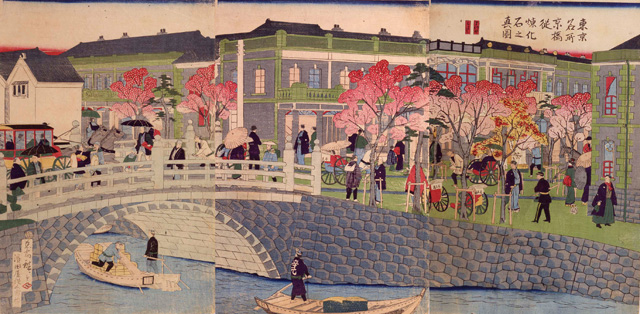
Utagawa Hiroshige Ⅲ ”Scenery of Brick Masonry Building at Kyōbashi in Tokyo” (2nd term)
Highlight ② Saigō Takamori as depicted by ukiyo-e artists
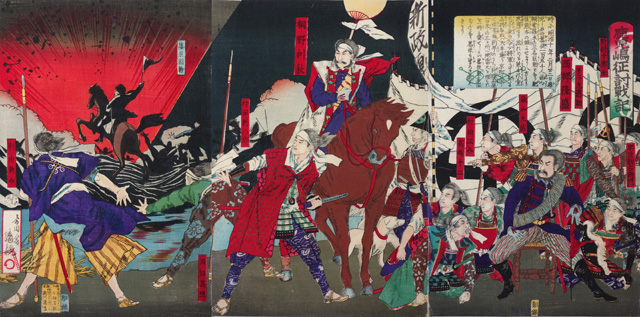
Kobayashi Kiyochika “Troop of Saigō Takamori Attacking Kumamoto Castle”(1st term)
Highlight③ Tsukioka Yoshitoshi and Kobayashi Kiyochika. Ukiyo-e artists who gathered attention in this period.
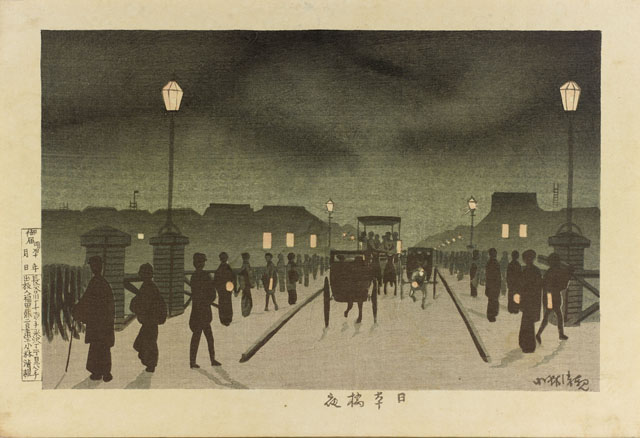
Kobayashi Kiyochika “Night Sight at Nihonbashi”(2nd term)
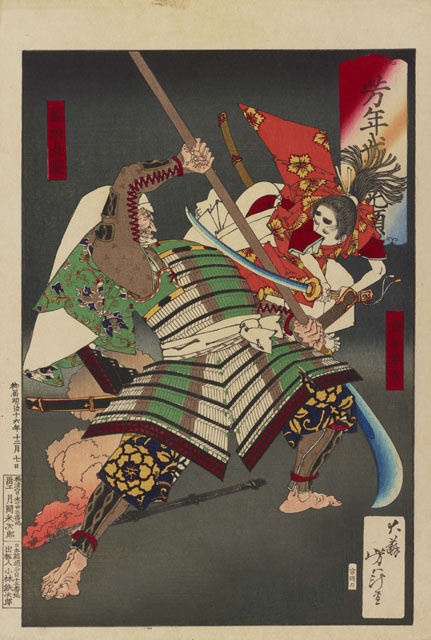
Tsukioka Yoshitoshi “Yoshitoshi’s Courageous Warriors : Minamoto-no Ushiwakamaru Battling with Kumasaka Chōhan”
(1st term)
<Highlight work of Exhibition>
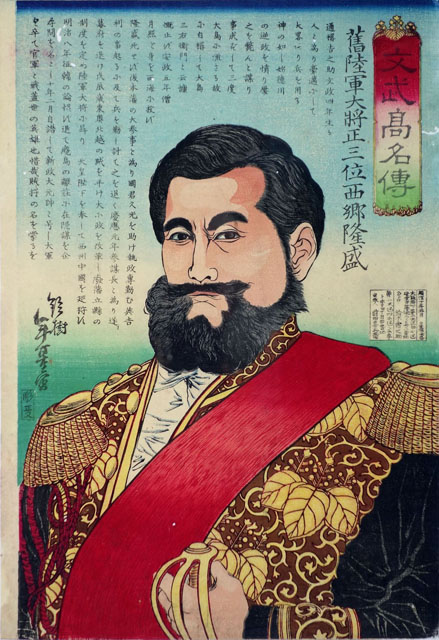
Suzuki Toshimoto “Famous People for Both Literary and Military Arts : Saigō Takamori” (1st term)
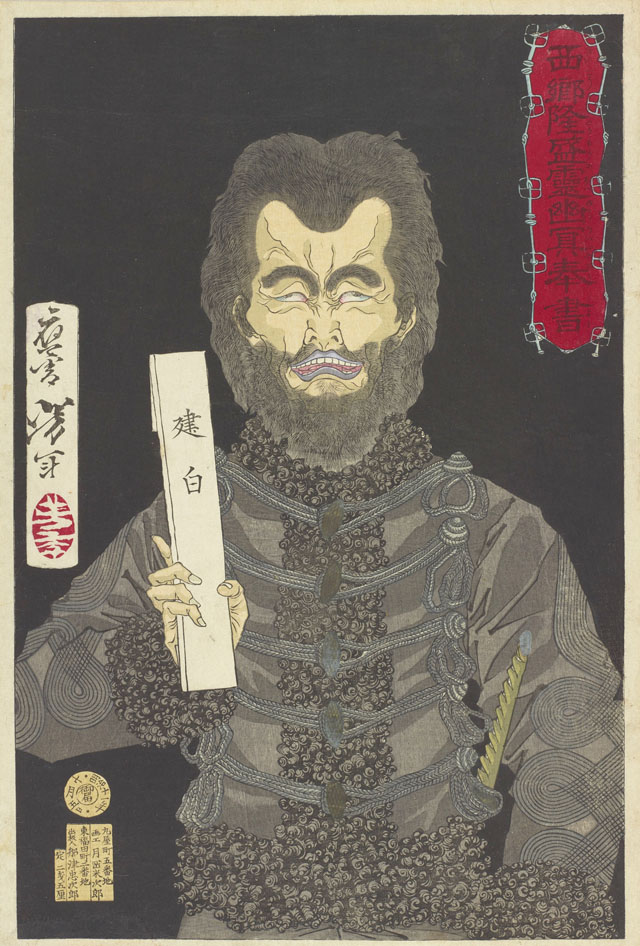
Tsukioka Yoshitoshi “Ghost of Saigō Takamori Holding a Petition” (2nd term)
Admission
| Adult | 700 yen |
|---|---|
| University and High school students | 500 yen |
| Junior High School Students and below | Free |
Calendar
Closed
-
-
2018 January
SUN MON TUE WED THU FRI SAT 1 2 3 4 5 6 7 8 9 10 11 12 13 14 15 16 17 18 19 20 21 22 23 24 25 26 27 28 29 30 31
-
-
2018 February
SUN MON TUE WED THU FRI SAT 1 2 3 4 5 6 7 8 9 10 11 12 13 14 15 16 17 18 19 20 21 22 23 24 25 26 27 28
